 The decline and incineration of Western civilization. 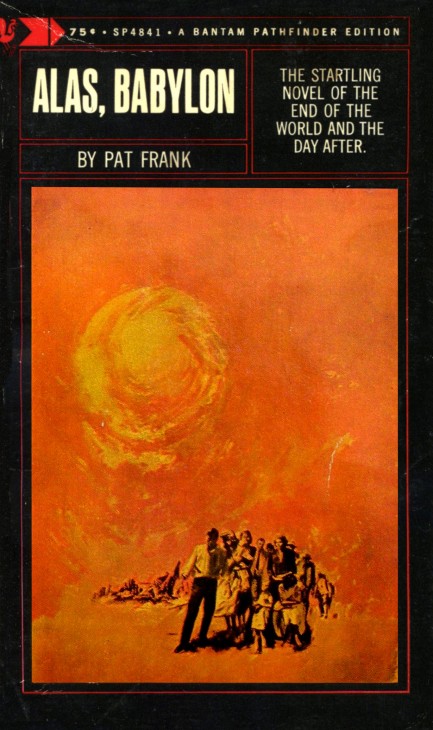  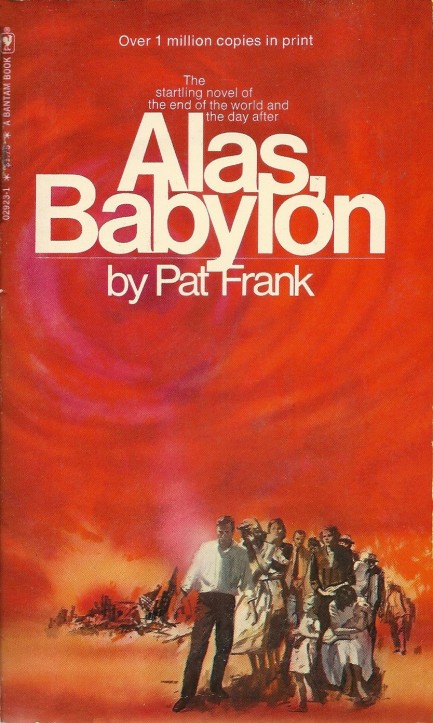
These covers for Pat Frank's acclaimed post apocalypse drama Alas, Babylon can be considered additions to our collection of nuclear explosion book covers. In the story, a missile from a fighter jet causes an explosion in Syria that the Soviets mistake for a full scale NATO nuclear strike. They retaliate with a full strike, the U.S. retaliates with a full strike, and that's all she wrote. Actually, not really. That's the first act. Frank wrote plenty more, none of it fun. The novel first appeared in 1959, with these not-quite-identical Bantam editions coming later. We may have missed them in our initial searches for nuke covers because they're pretty subtle, combing the idea of a red sun with an atomic blast, but we're sure these are supposed to be explosions—or at least evoke them. There's also a very cool Spanish cover we posted way back in 2009. No explosion on that one, but it's exceedingly interesting.
 Casablanca drifts 2,500 miles east and loses a little something along the way. 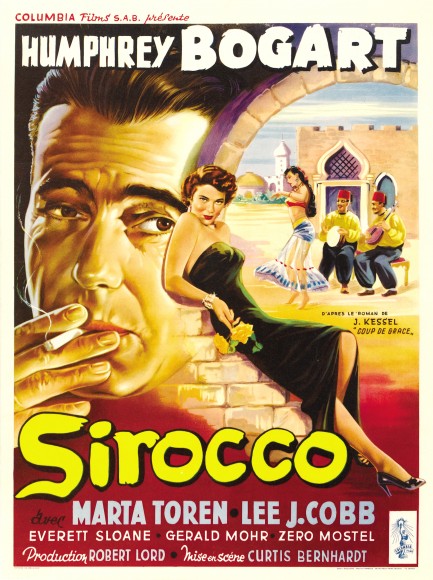
Above you see a nice French poster for the Humphrey Bogart adventure Sirocco, which we touched upon briefly several months back. As we noted then, Columbia Pictures promoted the film as being, “beyond Casablanca...” but Sirocco comes up short in that department. How could it not? It's like saying, “beyond chocolate chip cookie dough ice cream,” or “beyond a raspberry gin Ricky,” or “beyond the 2003 Hurricanes-Buckeyes NCAA Championship Game.” These things are not possible. But Sirocco is actually pretty good anyway, owing largely to its setting in 1925 Damascus, Syria (the film was actually shot in Yuma, Arizona, but the illusion worked adequately).
Plotwise, local independence fighters are trying to drive out French occupiers via any means deemed necessary, including what we call today terrorist bombings. Bogart plays Rick from Casablanca, except he's named Harry Smith. But he's the same cynical, opportunistic, womanizing lone wolf he was before, who instead of running a bar, runs guns. He has no ideology in his profession, except love of money, and will work for whoever can hire him, Syrian or French. As the situation in Damascus grows increasingly fraught he finds himself unwillingly stuck between the locals and the occupiers. He also finds himself in a love triangle with slinky Märta Torén and a French military officer played by Lee J. Cobb.
The movie quickly coalesces around what we like to think of as the big three Bogart plot devices: romantic feelings threaten to upset his hard-won cynicism, he must make a choice between desire and conscience, and he must beat the clock if he hopes to get out of Dodge with his skin intact. Beyond Casablanca? Columbia pretty much strip mined Casablanca, is what happened. Even so, Bogart had few serious misses in his career, and Sirocco isn't one of them. Fans will get to see him doing exactly what made him an icon, and for that reason alone we think it's worth a watch. After premiering in the U.S. in mid-1951, it opened in France today the same year. 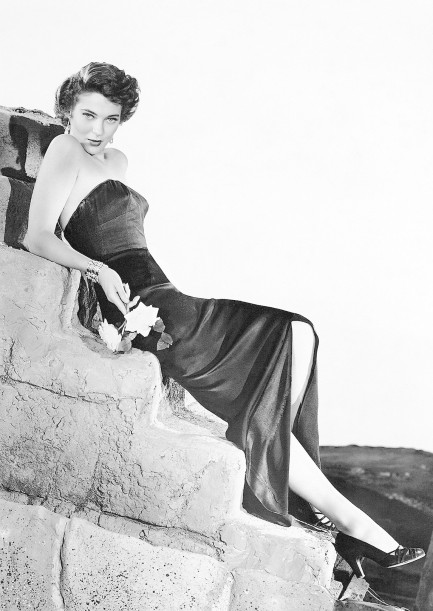 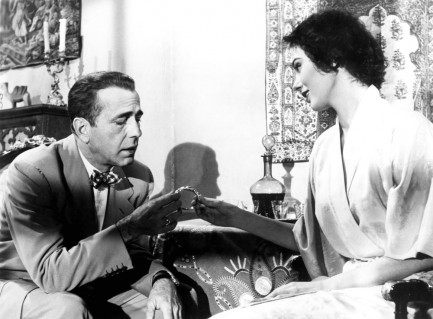 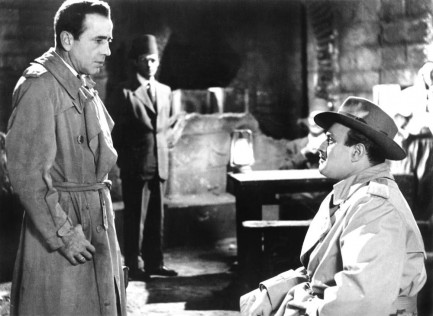 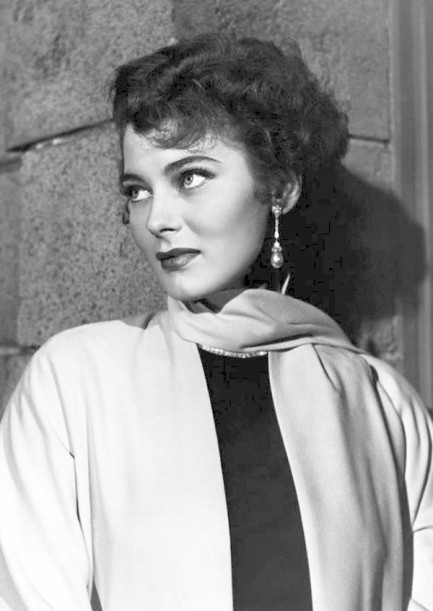  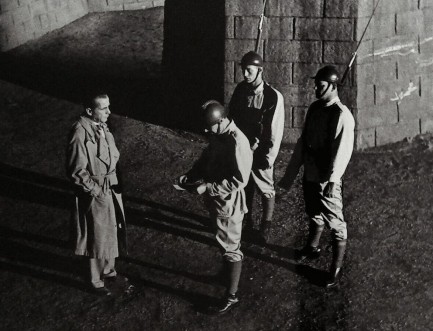  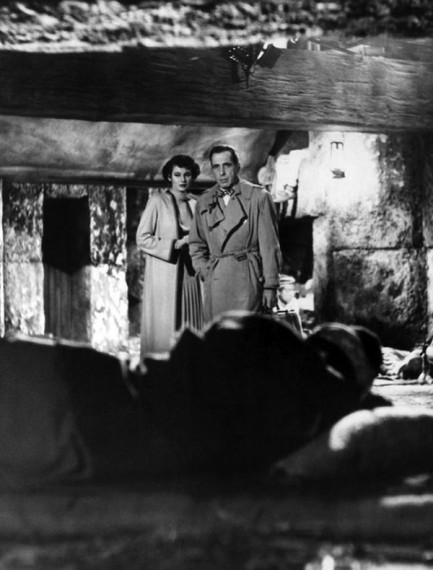 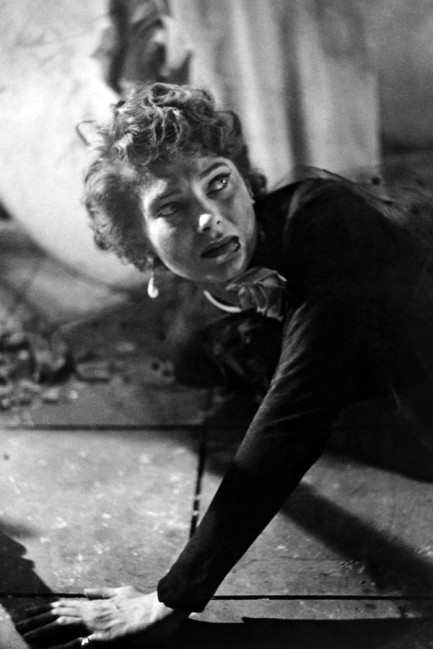 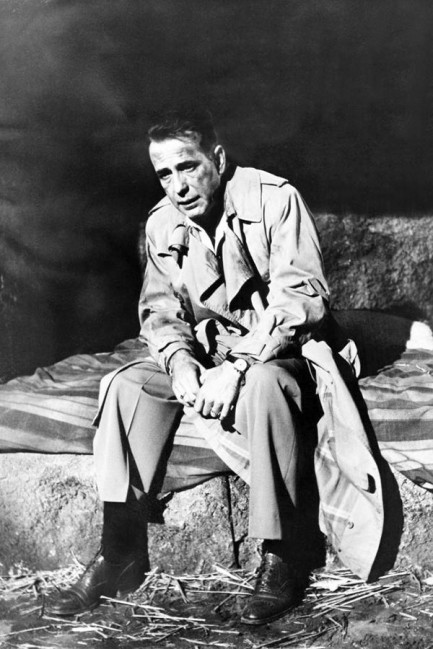 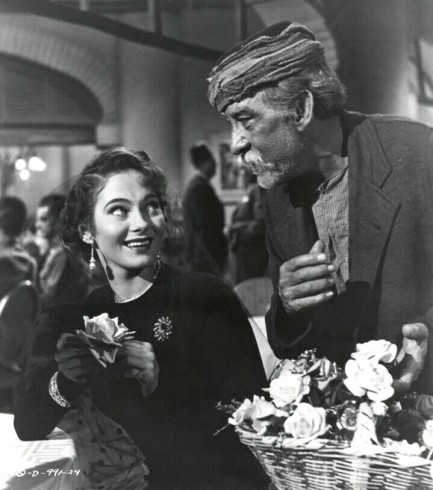 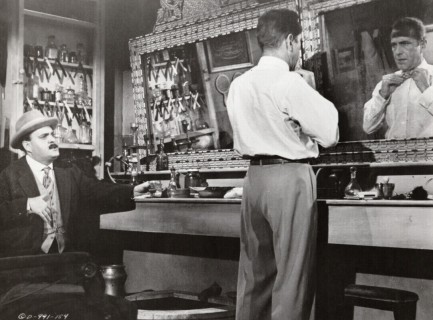 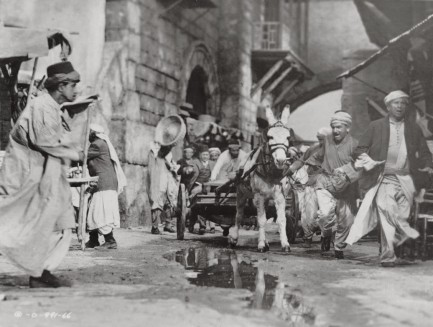 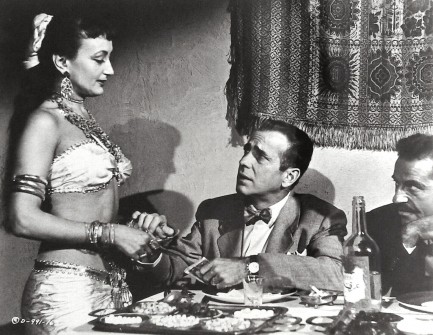 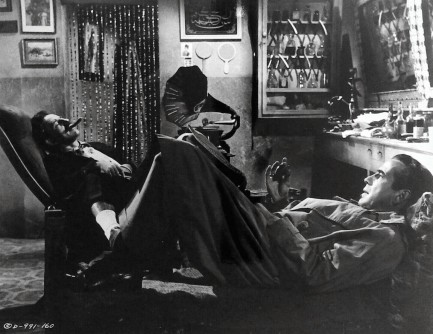 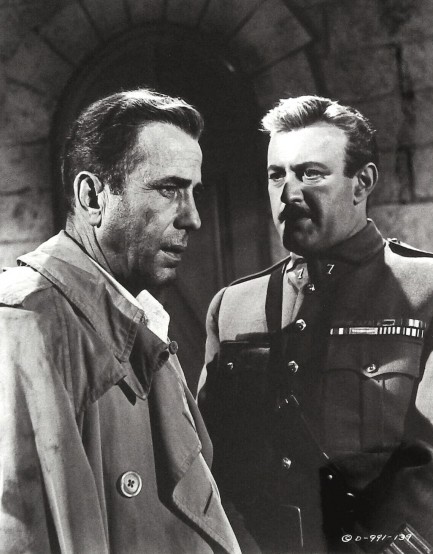 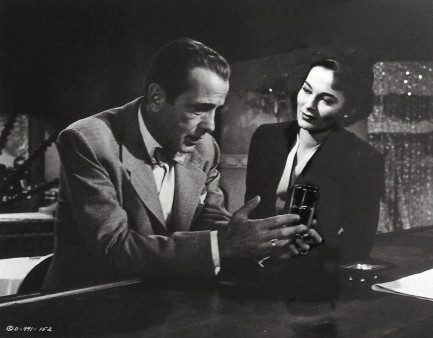 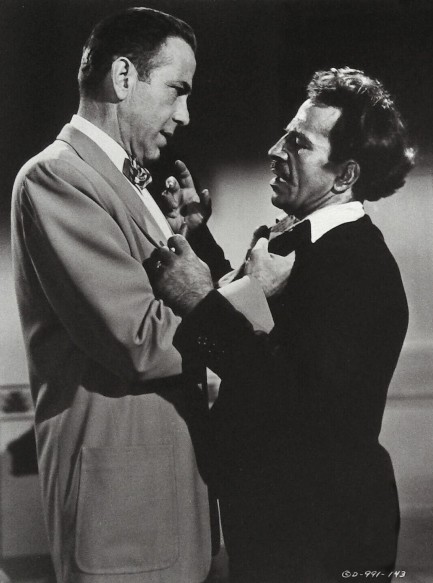
 Whatever the problem is Bogart will solve it.  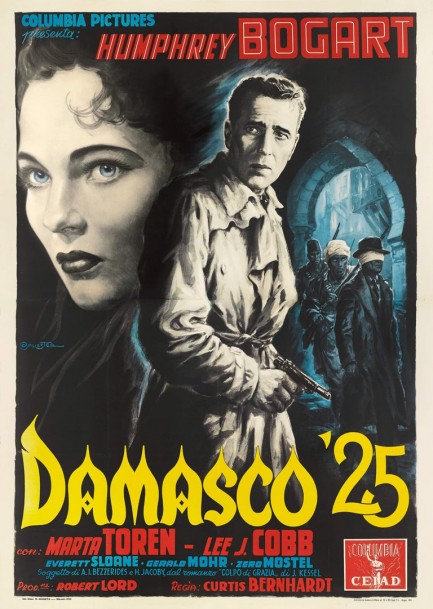
Above are two Italian posters for the Humphrey Bogart film Damasco '25, which is better known as Sirocco, and is yet another Casablanca clone. The U.S. poster even promises flat-out that the movie, an adventure about Syrian freedom fighters and French colonials in Damascus circa 1925, is “beyond Casablanca.” We'll see about that a bit later. These pieces were painted by the great illustrator Anselmo Ballester, whose work we've highlighted here. We'll get back to him later too. Sirocco opened in the U.S. in 1951, and premiered in Italy today in 1952.
 The Devil went down to Southeast Asia looking for fortunes to steal. 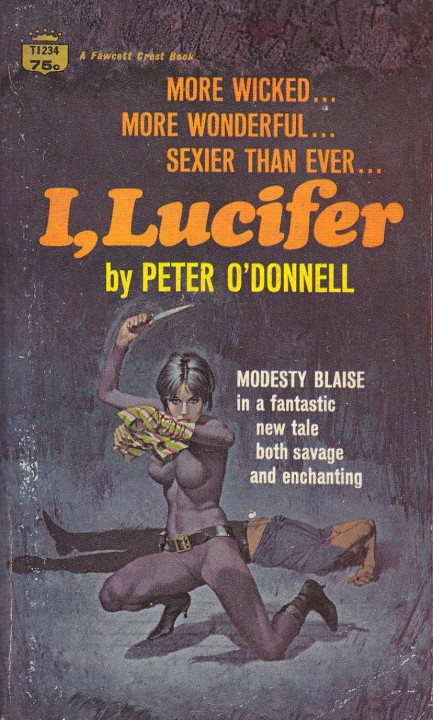
1969's I, Lucifer is Peter O'Donnell's third Modesty Blaise novel, and it's a series we're going through mainly to highlight the great cover art by Robert McGinnis. He didn't illustrate all the books. In fact, this might be the last, which means we'll probably move on to other authors. But that won't be because the Blaise books aren't good. In fact, for the sexy spy genre they're top notch—exotically located, compellingly plotted, and peopled by wacky Bond-style supervillains. Case in point: the titular character in I, Lucifer is a man suffering from a psychotic delusion that he's Satan. The funny part is he isn't evil. The real evil guy is Seff, the opportunist who launches a global extortion scheme that hinges on faux-Lucifer's participation even though his delusion prevents him having a clue what he's really doing. Lucifer might be the only villain we've encountered in a novel who's a victim.
When Seff's murderous extortion hits too close to home for Modesty, she and sidekick Willie Garvin gear up and eventually end up in the Philippines, where they right some wrongs, explosively. As usual Modesty uses sex to get over on the bad guys, and it's a major part of what readers enjoyed about the series. At one point she ponders whether a colleague thinks she's promiscuous. Well, no, she isn't by 1969 standards. But the joy of literature is she can be unpromiscuous, yet we can be there in the room for every one of her widely spaced encounters. This book is particularly amusing along those lines, as it brings two of Modesty's lovers together to be uncomfortable and/or jealous as they're displaced by a third. But sleaze fans will need to look elsewhere. O'Donnell is subtle—if not poetic—with his sex scenes.
Though the sexual aspects of Modesty Blaise were a major attraction of the novels, we enjoy even more the tactical nature of O'Donnell's action, which is probably an influence from his military service in Iran, Syria, Egypt, Greece and other places. It's also probably why so much of the Blaise series is connected to that region. While the tales are always exotic, this entry is even wilder than usual. How wild? It involves precognition, trained dolphins, Moro mercenaries, and body implants that kill remotely, yet it all works. That's because as always, in the center of the chaos, you have Blaise and Garvin, perfect friends, platonic soulmates, and two armed and extremely deadly halves of a razor sharp fighting machine. Abandon all hope ye who cross them.
 Hmm… an Englishman to gut with my new blade. And here I was planning to go home and shave my monobrow. 
We were talking recently about Harlequin’s early days as a publisher of more than romance fiction. Above is another example—Bats with Baby Faces by W. Stanley Moss, a former British Army officer who wrote such best sellers as Ill Met by Moonlight and A War of Shadows. Bats with Baby Faces, the title of which references bat-like masks rather than actual bats, deals with intrigue and smuggling in the Deir-ez-Zor region of Syria, and in Cairo, where Moss lived in a villa that became a hub for the British social set. The most famous of his numerous real-life adventures occurred during that period, and that time also served as inspiration for much of his fiction. Harlequin’s edition of Bats with Baby Faces was published in 1952, and the cover art, with its mean caricature of an Egyptian who’s so swarthy he’s—bizarrely—purple, is uncredited. More Harlequin here and here.
 A siren in the desert. 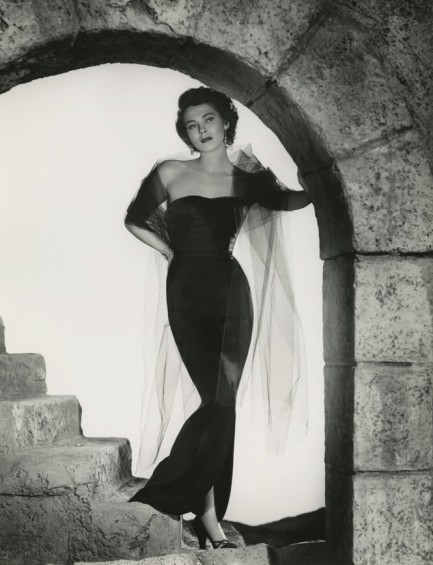
This Columbia Pictures promo photo of Swedish actress Märta Torén was shot when she appeared in the adventure Sirocco in 1951, starring opposite Humphrey Bogart. The film, which was set in Syria, was an attempt to recapture the magic of Casablanca, and one of its taglines was: “Beyond Casablanca... Fate, in a low-cut gown lies in wait for Bogart!” The movie didn’t recapture that Casablanca magic, but it was a nice role for Torén. She worked steadily until 1957 when she died of a sudden brain hemorrhage at age 30.
|
 |

The headlines that mattered yesteryear.
2003—Hope Dies
Film legend Bob Hope dies of pneumonia two months after celebrating his 100th birthday. 1945—Churchill Given the Sack
In spite of admiring Winston Churchill as a great wartime leader, Britons elect
Clement Attlee the nation's new prime minister in a sweeping victory for the Labour Party over the Conservatives. 1952—Evita Peron Dies
Eva Duarte de Peron, aka Evita, wife of the president of the Argentine Republic, dies from cancer at age 33. Evita had brought the working classes into a position of political power never witnessed before, but was hated by the nation's powerful military class. She is lain to rest in Milan, Italy in a secret grave under a nun's name, but is eventually returned to Argentina for reburial beside her husband in 1974. 1943—Mussolini Calls It Quits
Italian dictator Benito Mussolini steps down as head of the armed forces and the government. It soon becomes clear that Il Duce did not relinquish power voluntarily, but was forced to resign after former Fascist colleagues turned against him. He is later installed by Germany as leader of the Italian Social Republic in the north of the country, but is killed by partisans in 1945.
|

|
|

It's easy. We have an uploader that makes it a snap. Use it to submit your art, text, header, and subhead. Your post can be funny, serious, or anything in between, as long as it's vintage pulp. You'll get a byline and experience the fleeting pride of free authorship. We'll edit your post for typos, but the rest is up to you. Click here to give us your best shot.

|
|





































































































